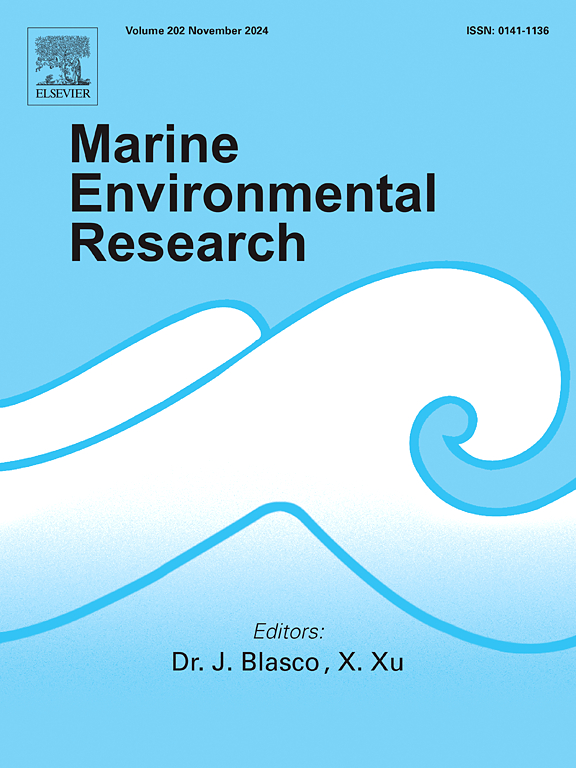Adaptive divergence in response to shared environmental pressures: examining gastropod shell exploitation by intertidal hermit crabs
IF 3
3区 环境科学与生态学
Q2 ENVIRONMENTAL SCIENCES
引用次数: 0
Abstract
Gastropods commonly cope with the biotic and abiotic pressures of the intertidal through morphological adaptations of their shells. Snails from wave-exposed areas commonly have more streamlined shells that reduce drag forces with larger openings that favor their attachment to the substrate. In contrast, snails from sites with high predation commonly have a more globose shape that hinders breakage by predators. Hermit crabs use the shells of dead snails to protect their soft abdomen and confront similar biotic and abiotic pressures. Our main goal was to determine whether hermit crabs exploit intraspecific variation in snail shell shape in ways that may be adaptive; we tested two snail species with different shell profiles (Mancinella = globose-like and Stramonita = streamlined) across two intertidal zones. Using geometric morphometrics, we compared the shape and size of shells of snails with those used by hermit crabs in the upper and mid intertidal zones. We found that shell shape differed depending on the type of organism and the intertidal zone they inhabit. Mancinella shell shape was similar between snails and hermit crabs in the mid intertidal, and Stramonita shells were similar between crabs and snails in the upper intertidal. However, the shell shape differed between snails and hermit crabs in Mancinella shells in the upper intertidal and Stramonita shells in the mid intertidal. Furthermore, in the upper intertidal, hermit crabs occupied the most extreme shapes of each snail species, the most globose Mancinella and most streamlined Stramonita shells. Thus, although both taxa are subject to similar pressures on shell shape, different constraints result in some shape similarities and contrasts among species depending on the intertidal zones they inhabit.
求助全文
约1分钟内获得全文
求助全文
来源期刊

Marine environmental research
环境科学-毒理学
CiteScore
5.90
自引率
3.00%
发文量
217
审稿时长
46 days
期刊介绍:
Marine Environmental Research publishes original research papers on chemical, physical, and biological interactions in the oceans and coastal waters. The journal serves as a forum for new information on biology, chemistry, and toxicology and syntheses that advance understanding of marine environmental processes.
Submission of multidisciplinary studies is encouraged. Studies that utilize experimental approaches to clarify the roles of anthropogenic and natural causes of changes in marine ecosystems are especially welcome, as are those studies that represent new developments of a theoretical or conceptual aspect of marine science. All papers published in this journal are reviewed by qualified peers prior to acceptance and publication. Examples of topics considered to be appropriate for the journal include, but are not limited to, the following:
– The extent, persistence, and consequences of change and the recovery from such change in natural marine systems
– The biochemical, physiological, and ecological consequences of contaminants to marine organisms and ecosystems
– The biogeochemistry of naturally occurring and anthropogenic substances
– Models that describe and predict the above processes
– Monitoring studies, to the extent that their results provide new information on functional processes
– Methodological papers describing improved quantitative techniques for the marine sciences.
 求助内容:
求助内容: 应助结果提醒方式:
应助结果提醒方式:


